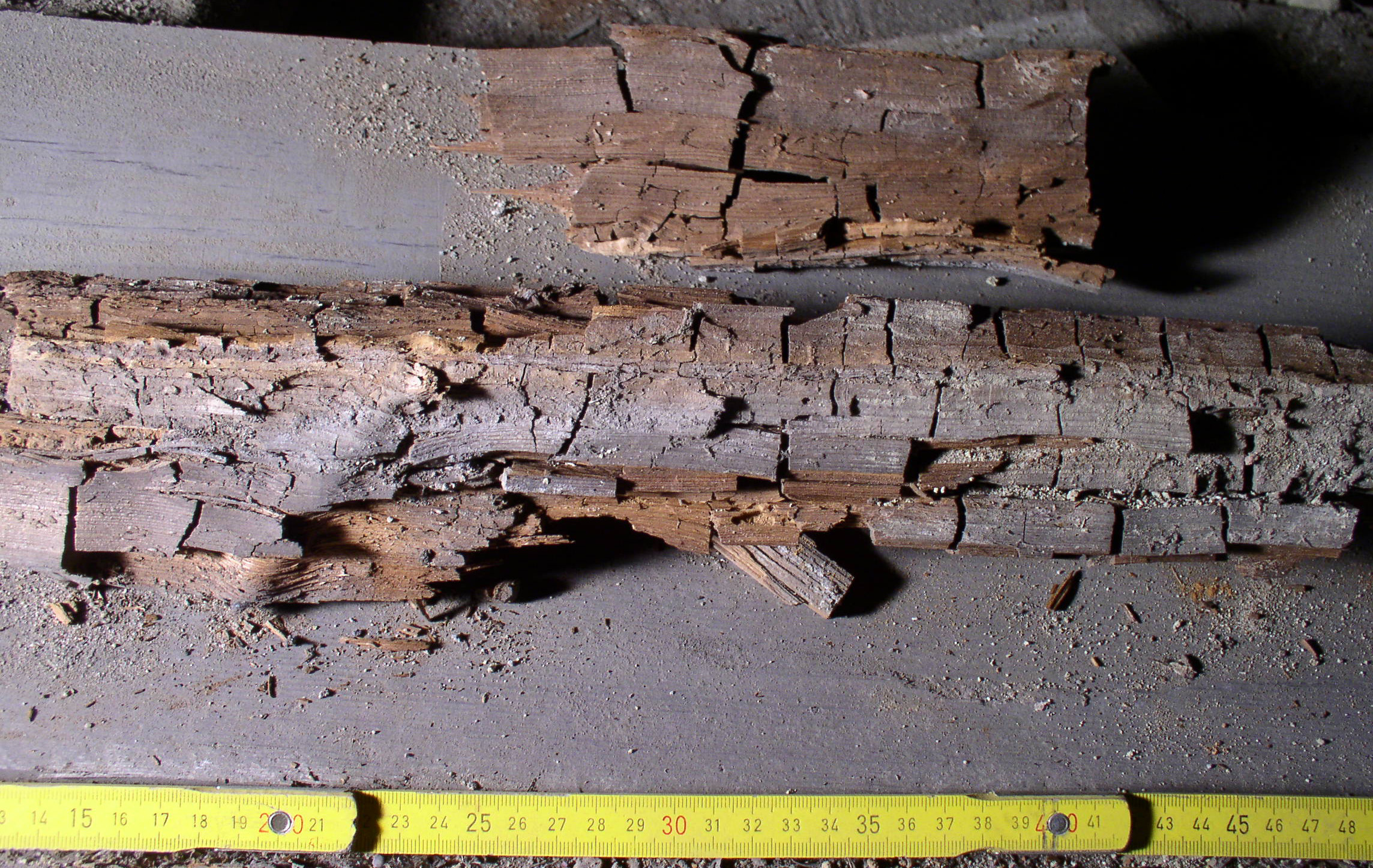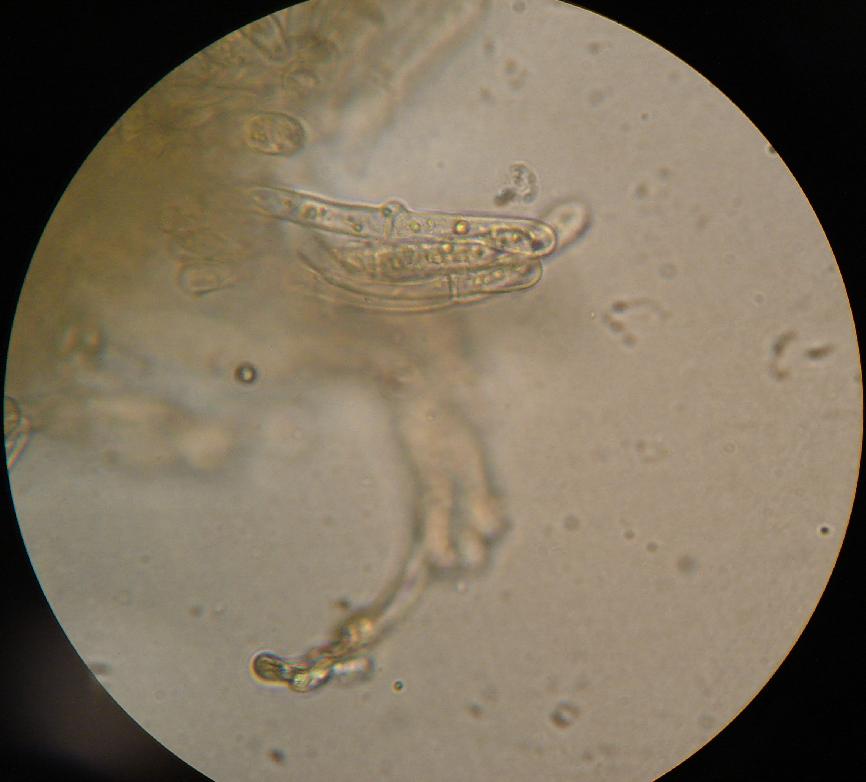|
Gelatoporiaceae
The Gelatoporiaceae are a small family of crust fungi in the order Polyporales. The family was circumscribed in 2017 by mycologists Otto Miettinen, Alfredo Justo and David Hibbett to contain the type genus '' Gelatoporia'' and three other related genera, '' Cinereomyces'', '' Obba'', and '' Sebipora''. Taxonomy In a 2012 publication, Miettinen and Mario Rajchenberg introduced the name "Cinereomyces clade" to accommodate a small group of white-rot polypores of uncertain position in the order Polyporales. Further analyses confirmed that this clade represents a separate lineage from the Polyporaceae. The genus ''Gelatoporia'', upon which the family is based, was defined by Tuomo Niemelä in 1985 to contain poroid crust fungi with a monomitic hyphal structure, clamped hyphae, and producing white rot. Description The fruit bodies of the Gelatoporiaceae are crust-like (resupinate), and have a poroid hymenophore A hymenophore refers to the hymenium-bearing structure of a fungal fru ... [...More Info...] [...Related Items...] OR: [Wikipedia] [Google] [Baidu] |
Sebipora
''Sebipora'' is a fungal genus in the family Gelatoporiaceae. It was circumscribed in 2012 by mycologist Otto Miettinen to contain the crust fungus ''Sebipora aquosa'', its single species. This fungus is found in low altitudes in Sumatra and New Guinea, where it causes a white rot on dead angiosperm wood, particularly fallen tree trunks, and frequently on burned wood. ''Sebipora aquosa'' has a monomitic hyphal system (containing only generative hyphae), and thin-walled, cylindrical spores measuring 5.7–7.6 by 2.1–2.7 μm and containing one or two oil drops. Cystidia and cystidioles are absent from the hymenium. The binomial name, which combines the Latin words ''sebum'' ("tallow") and ''aquosus'' ("watery"), refers to the appearance of fresh fruit bodies. ''Sebiporia'' is grouped in the ''Cinereomyces'' clade. This clade, which groups phylogenetically outside of the "core polyporoid clade", contains the related genera '' Gelatoporia'', '' Obba'', and '' Cinereomyces'' ... [...More Info...] [...Related Items...] OR: [Wikipedia] [Google] [Baidu] |
Cinereomyces Lindbladii
''Cinereomyces'' is a genus of resupinate (crust-like) fungi in the family Gelatoporiaceae. The genus was circumscribed by Swiss mycologist Walter Jülich in 1981. Species in the genus have a gray pore surface except for a whitish margin, and skeletal hyphae with gelatinized walls. , Index Fungorum accepts two species of ''Cinereomyces'': the type Type may refer to: Science and technology Computing * Typing, producing text via a keyboard, typewriter, etc. * Data type, collection of values used for computations. * File type * TYPE (DOS command), a command to display contents of a file. * Ty ..., '' C. lindbladii'', and '' C. dilutabilis''. The latter species was transferred to ''Cinereomyces'' from '' Diplomitoporus'' in 2016. Distribution ''Cinereomyces lindbladii'' is widely distributed, while ''C. dilutabilis'' has been recorded from Brazil and Costa Rica. References External links * Gelatoporiaceae Polyporales genera Fungi described in 1982 Taxa nam ... [...More Info...] [...Related Items...] OR: [Wikipedia] [Google] [Baidu] |
Obba (fungus)
''Obba'' is a genus of three species of poroid, white rot crust fungi in the family Gelatoporiaceae. The genome sequence of the type species, '' O. rivulosa'', was reported in 2016. Taxonomy The genus was circumscribed in 2012 by mycologists Otto Miettinen and Mario Rajchenberg. The three species are members of the ''Cinereomyces'' clade, a grouping of phylogenetically related fungi distinct from the core polyporoid clade. '' O. rivulosa'' was introduced to science by Miles Joseph Berkeley and Moses Ashley Curtis in 1869 as ''Polyporus rivulosus''. The type species, '' O. valdiviana'', was originally described as a variety of '' Ceriporiopsis rivulosa'' by Rajchenberg in 1995. The genus was formally transferred to the new family Gelatoporiaceae in 2017. The generic name ''Obba'' alludes to the similarity of the bottle-shaped cystidioles characteristic of the genus to the household containers for liquids used in Rome. Description ''Obba'' species have crust- ... [...More Info...] [...Related Items...] OR: [Wikipedia] [Google] [Baidu] |
Polyporales
The Polyporales are an order of about 1800 species of fungi in the division Basidiomycota. The order includes some (but not all) polypores as well as many corticioid fungi and a few agarics (mainly in the genus ''Lentinus''). Many species within the order are saprotrophic, most of them wood-rotters. Some genera, such as ''Ganoderma'' and ''Fomes'', contain species that attack living tissues and then continue to degrade the wood of their dead hosts. Those of economic importance include several important pathogens of trees and a few species that cause damage by rotting structural timber. Some of the Polyporales are commercially cultivated and marketed for use as food items or in traditional Chinese medicine. Taxonomy History The order was originally proposed in 1926 by Swiss mycologist Ernst Albert Gäumann to accommodate species within the phylum Basidiomycota producing basidiocarps (fruit bodies) showing a gymnocapous mode of development (forming the spore-bearing surface ext ... [...More Info...] [...Related Items...] OR: [Wikipedia] [Google] [Baidu] |
Gelatoporia
''Gelatoporia'' is a fungal genus in the family Gelatoporiaceae. This is a monotypic genus, containing the single widely distributed species ''Gelatoporia subvermispora''. The genus was circumscribed in 1985 by Finnish mycologist Tuomo Niemelä to contain poroid crust fungi with a monomitic hypha A hypha (; ) is a long, branching, filamentous structure of a fungus, oomycete, or actinobacterium. In most fungi, hyphae are the main mode of vegetative growth, and are collectively called a mycelium. Structure A hypha consists of one or ...l structure, clamped hyphae, and producing white rot. References Gelatoporiaceae Monotypic Polyporales genera Taxa described in 1985 {{Polyporales-stub ... [...More Info...] [...Related Items...] OR: [Wikipedia] [Google] [Baidu] |
Cinereomyces
''Cinereomyces'' is a genus of resupinate (crust-like) fungi in the family Gelatoporiaceae. The genus was circumscribed by Swiss mycologist Walter Jülich in 1981. Species in the genus have a gray pore surface except for a whitish margin, and skeletal hyphae with gelatinized walls. , Index Fungorum accepts two species of ''Cinereomyces'': the type Type may refer to: Science and technology Computing * Typing, producing text via a keyboard, typewriter, etc. * Data type, collection of values used for computations. * File type * TYPE (DOS command), a command to display contents of a file. * Ty ..., '' C. lindbladii'', and '' C. dilutabilis''. The latter species was transferred to ''Cinereomyces'' from '' Diplomitoporus'' in 2016. Distribution ''Cinereomyces lindbladii'' is widely distributed, while ''C. dilutabilis'' has been recorded from Brazil and Costa Rica. References External links * Gelatoporiaceae Polyporales genera Fungi described in 1982 Taxa nam ... [...More Info...] [...Related Items...] OR: [Wikipedia] [Google] [Baidu] |
Temperate
In geography, the temperate climates of Earth occur in the middle latitudes (23.5° to 66.5° N/S of Equator), which span between the tropics and the polar regions of Earth. These zones generally have wider temperature ranges throughout the year and more distinct seasonal changes compared to tropical climates, where such variations are often small and usually only have precipitation changes. In temperate climates, not only do latitudinal positions influence temperature changes, but sea currents, prevailing wind direction, continentality (how large a landmass is) and altitude also shape temperate climates. The Köppen climate classification defines a climate as "temperate" C, when the mean temperature is above but below in the coldest month to account for the persistency of frost. However, other climate classifications set the minimum at . Zones and climates The north temperate zone extends from the Tropic of Cancer (approximately 23.5° north latitude) to the Arctic ... [...More Info...] [...Related Items...] OR: [Wikipedia] [Google] [Baidu] |
Substrate (biology)
In biology, a substrate is the surface on which an organism (such as a plant, fungus, or animal) lives. A substrate can include biotic or abiotic materials and animals. For example, encrusting algae that lives on a rock (its substrate) can be itself a substrate for an animal that lives on top of the algae. Inert substrates are used as growing support materials in the hydroponic cultivation of plants. In biology substrates are often activated by the nanoscopic process of substrate presentation. In agriculture and horticulture * Cellulose substrate * Expanded clay aggregate (LECA) * Rock wool * Potting soil * Soil In animal biotechnology Requirements for animal cell and tissue culture Requirements for animal cell and tissue culture are the same as described for plant cell, tissue and organ culture (In Vitro Culture Techniques: The Biotechnological Principles). Desirable requirements are (i) air conditioning of a room, (ii) hot room with temperature recorder, (iii) microscope r ... [...More Info...] [...Related Items...] OR: [Wikipedia] [Google] [Baidu] |
Wood-decay Fungus
A wood-decay or xylophagous fungus is any species of fungus that digests moist wood, causing it to rot. Some species of wood-decay fungi attack dead wood, such as brown rot, and some, such as ''Armillaria'' (honey fungus), are parasitic and colonize living trees. Excessive moisture above the fibre saturation point in wood is required for fungal colonization and proliferation. In nature, this process causes the breakdown of complex molecules and leads to the return of nutrients to the soil. Wood-decay fungi consume wood in various ways; for example, some attack the carbohydrates in wood and some others decay lignin. The rate of decay of wooden materials in various climates can be estimated by empirical models.Viitanen, T. et al. (2010). Towards modelling of decay risk of wooden materials. European Journal of Wood and Wood Products 68:303-313. Wood-decay fungi can be classified according to the type of decay that they cause. The best-known types are brown rot, soft rot, and whit ... [...More Info...] [...Related Items...] OR: [Wikipedia] [Google] [Baidu] |
Clamp Connection
A clamp connection is a hook-like structure formed by growing hyphal cells of certain fungi. It is a characteristic feature of Basidiomycetes fungi. It is created to ensure that each cell, or segment of hypha separated by septa (cross walls), receives a set of differing nuclei, which are obtained through mating of hyphae of differing sexual types. It is used to maintain genetic variation within the hypha much like the mechanisms found in crozier (hook) during sexual reproduction. Formation Clamp connections are formed by the terminal hypha during elongation. Before the clamp connection is formed this terminal segment contains two nuclei. Once the terminal segment is long enough it begins to form the clamp connection. At the same time, each nucleus undergoes mitotic division to produce two daughter nuclei. As the clamp continues to develop it uptakes one of the daughter (green circle) nuclei and separates it from its sister nucleus. While this is occurring the remaining nuclei ... [...More Info...] [...Related Items...] OR: [Wikipedia] [Google] [Baidu] |
Saprophytic
Saprotrophic nutrition or lysotrophic nutrition is a process of chemoheterotrophic extracellular digestion involved in the processing of decayed (dead or waste) organic matter. It occurs in saprotrophs, and is most often associated with fungi (for example ''Mucor'') and soil bacteria. Saprotrophic microscopic fungi are sometimes called saprobes; saprotrophic plants or bacterial flora are called saprophytes ( sapro- 'rotten material' + -phyte 'plant'), although it is now believed that all plants previously thought to be saprotrophic are in fact parasites of microscopic fungi or other plants. The process is most often facilitated through the active transport of such materials through endocytosis within the internal mycelium and its constituent hyphae. states the purpose of saprotrophs and their internal nutrition, as well as the main two types of fungi that are most often referred to, as well as describes, visually, the process of saprotrophic nutrition through a diagram of hy ... [...More Info...] [...Related Items...] OR: [Wikipedia] [Google] [Baidu] |

